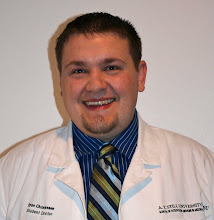It is a challenging time facing our profession. I'm not sure how things will turn out, but my passion for primary care is increasing by the day. ~R
Half of primary-care doctors in survey would leave medicine
- Story Highlights
- Doctors cite red tape from insurance companies, government agencies
- Med school students shy away from family medicine
- Shortage of primary care physicians predicted to be 35,000 to 40,000 by 2025
CNN Medical Producer
(CNN) -- Nearly half the respondents in a survey of U.S. primary care physicians said that they would seriously consider getting out of the medical business within the next three years if they had an alternative.
Experts say if many physicians stop practicing, it could be devastating to the health care industry.
The survey, released this week by the Physicians' Foundation, which promotes better doctor-patient relationships, sought to find the reasons for an identified exodus among family doctors and internists, widely known as the backbone of the health industry.
A U.S. shortage of 35,000 to 40,000 primary care physicians by 2025 was predicted at last week's American Medical Association annual meeting.
In the survey, the foundation sent questionnaires to more than 150,000 doctors nationwide.
Of the 12,000 respondents, 49 percent said they'd consider leaving medicine. Many said they are overwhelmed with their practices, not because they have too many patients, but because there's too much red tape generated from insurance companies and government agencies.
And if that many physicians stopped practicing, that could be devastating to the health care industry.
"We couldn't survive that," says Dr. Walker Ray, vice president of the Physicians Foundation. "We are only producing in this country a thousand to two thousand primary doctors to replace them. Medical students are not choosing primary care."
Dr. Alan Pocinki has been practicing medicine for 17 years. He began his career around the same time insurance companies were turning to the PPO and HMO models. So he was a little shocked when he began spending more time on paperwork than patients and found he was running a small business, instead of a practice. He says it's frustrating.
Don't Miss
"I had no business training, as far as how to run a business, or how to evaluate different plans," Pocinki says. "It was a whole brave new world and I had to sort of learn on the fly."
To manage their daily work schedules, many survey respondents reported making changes. With lower reimbursement from insurance companies and the cost of malpractice insurance skyrocketing, these health professionals say it's not worth running a practice and are changing careers. Others say they're going into so-called boutique medicine, in which they charge patients a yearly fee up front and don't take insurance.
And some like Pocinki are limiting the type of insurance they'll take and the number of patients on Medicare and Medicaid. According to the foundation's report, over a third of those surveyed have closed their practices to Medicaid patients and 12 percent have closed their practices to Medicare patients That can leave a lot of patients looking for a doctor.
And as Ray mentioned, med school students are shying away from family medicine. In a survey published in the Journal of the American Medical Association in September, only 2 percent of current medical students plan to take up primary care. That's because these students are wary of the same complaints that are causing existing doctors to flee primary care: hectic clinics, burdensome paperwork and systems that do a poor job of managing patients with chronic illness.
So what to do? Physicians don't have a lot of answers. But doctors say it's time to make some changes, not only in the health care field but also with the insurance industry. And they're looking to the new administration for guidance.
One of President-elect Barack Obama's health care promises is to provide a primary care physician for every American. But some health experts, including Pocinki, are skeptical.
"People who have insurance can't find a doctor, so suddenly we are going to give insurance to a whole bunch of people who haven't had it, without increasing the number of physicians?" he says. "It's going to be a problem."



